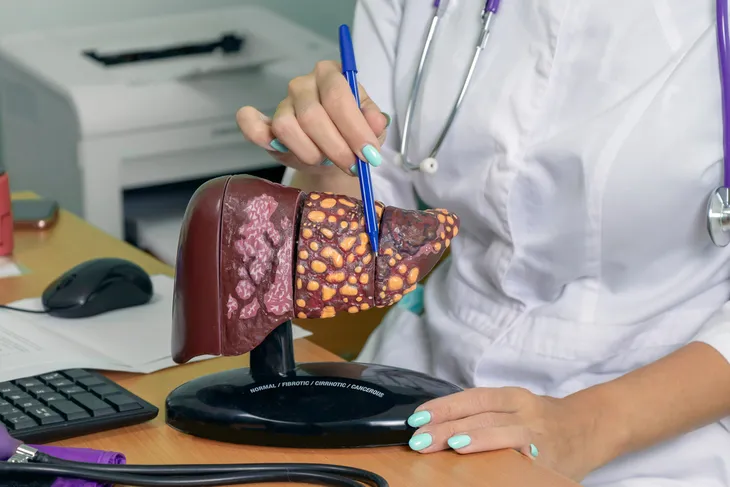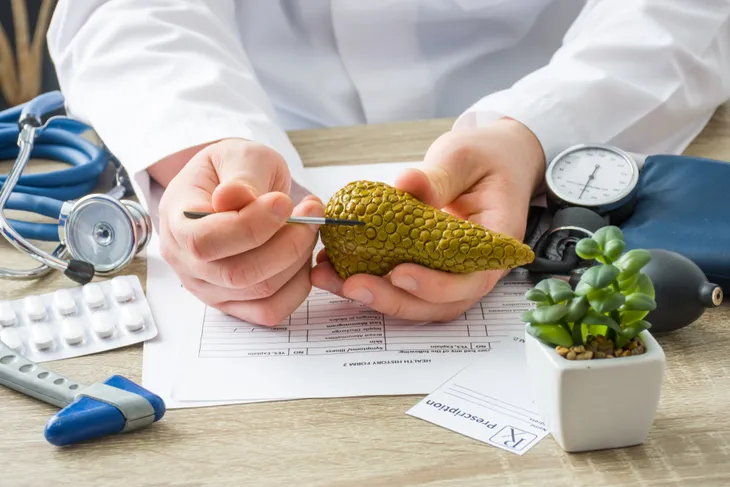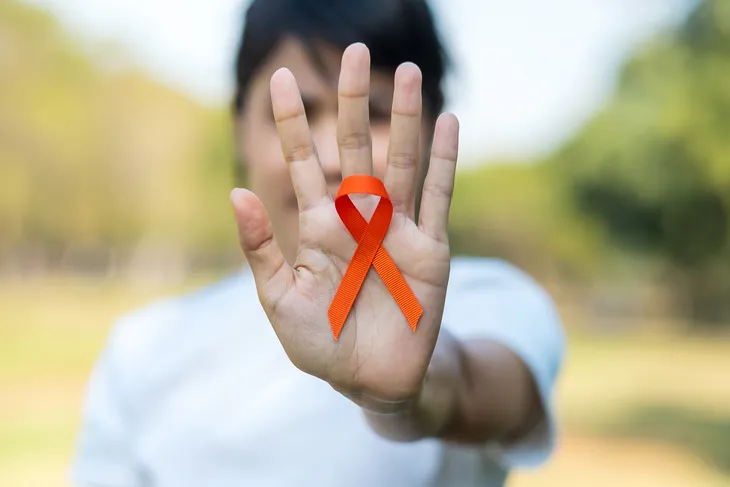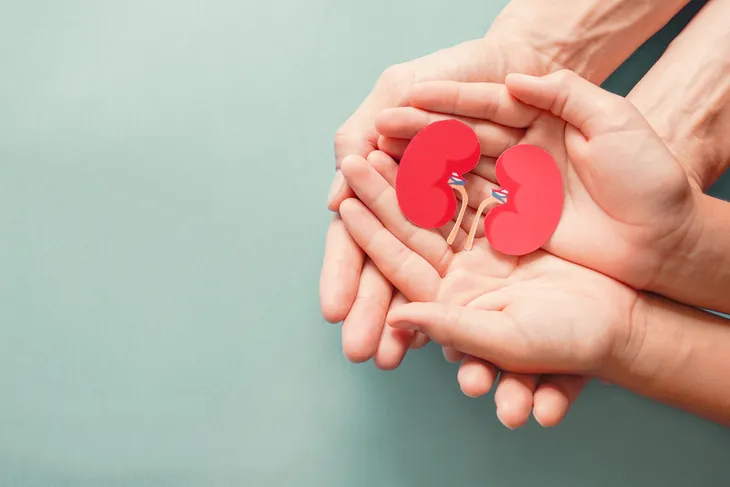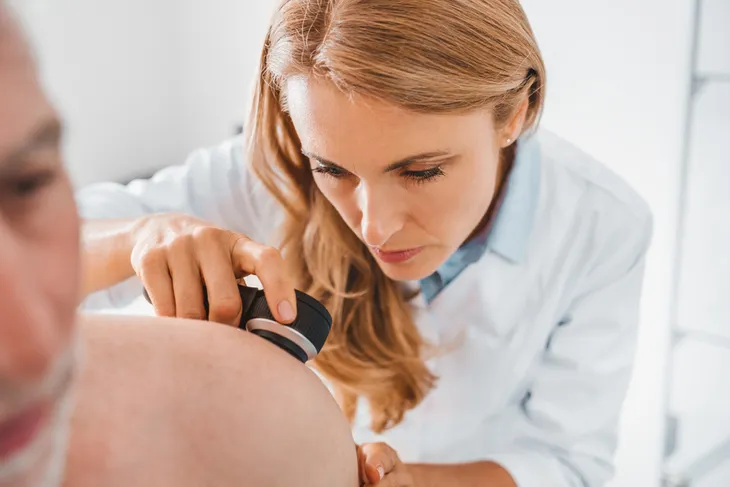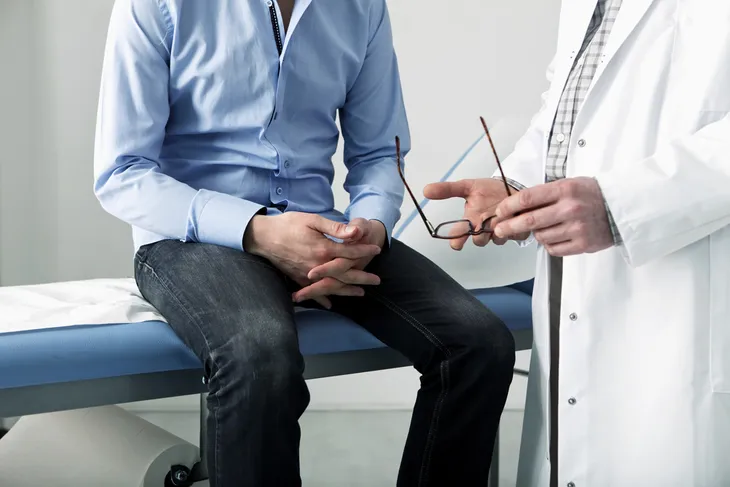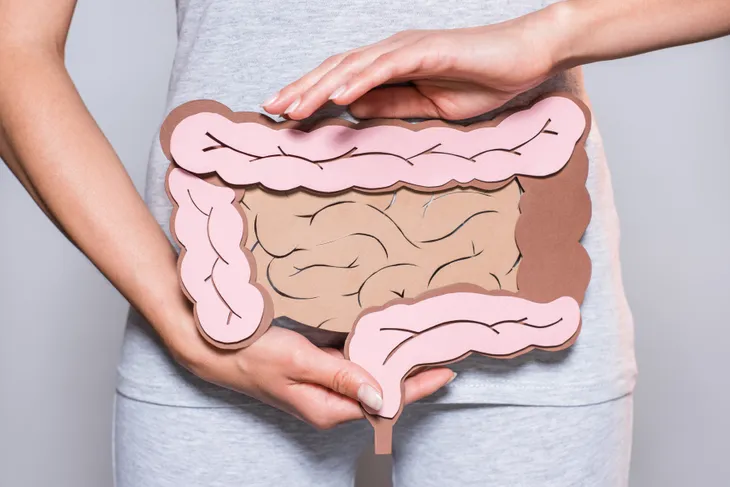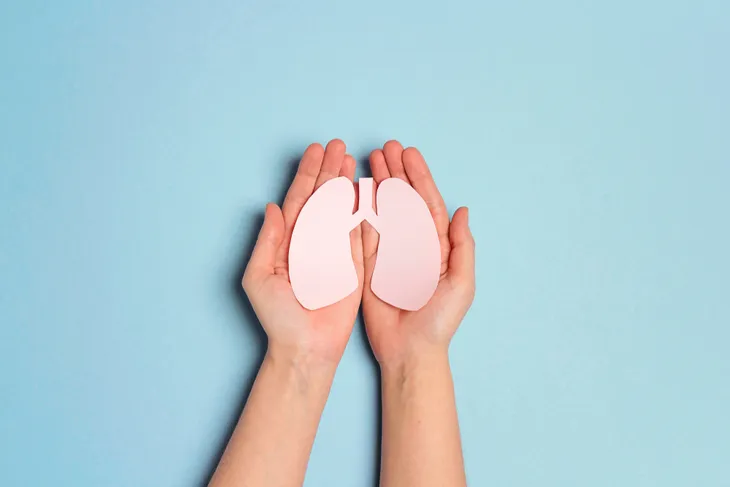- 1 in 2 people will develop some form of cancer in their lifetime.
- While there are many different types of cancer, some are more common than others.
- For the best outcome, early intervention is key.
Most people have been affected by cancer in some way, whether that’s being diagnosed yourself or knowing someone battling cancer. In fact, it’s so common that the National Health Service (NHS) says 1 in 2 people will develop some form of cancer during their lifetime.
13. Liver Cancer
One common type of cancer is liver cancer which develops when malignant cells form in the tissue of the liver. Though several types of cancer can develop in the liver, the Mayo Clinic says the most common type of liver cancer is hepatocellular carcinoma. Other less common types of liver cancer include intrahepatic cholangiocarcinoma and hepatoblastoma.
Unfortunately, the source says most people don’t show signs or symptoms in the early stages of primary liver cancer. That said, when symptoms do appear you should be on the lookout for:
- Unexplained weight loss
- Loss of appetite
- Upper abdominal pain
- Nausea and vomiting
- General fatigue and weakness
- Abdominal swelling
- Jaundice (yellowing of the skin and whites of the eyes)
- White, chalky stools
12. Thyroid Cancer
Another common type of cancer to be aware of is thyroid cancer. This type of cancer forms in the thyroid gland (shaped like a butterfly), which is in the front part of the neck. The American Cancer Society notes that papillary is the most common type of thyroid cancer, accounting for 8 out of 10 thyroid cancer cases. Luckily, this type can often be treated successfully and is rarely fatal. Anaplastic carcinoma, on the other hand, spreads rapidly and is very hard to treat. That said, this type is rare, only making up about 2-percent of all thyroid cancers.
The source says the following may be signs of thyroid cancer:
- A lump in the neck (that sometimes grows quickly)
- Swelling in the neck
- Pain in the front of the neck (that may radiate toward the ears)
- Hoarseness or other voice changes that don’t resolve
- Difficulty swallowing
- Difficulty breathing
- A persistent cough that’s not caused by a cold
11. Pancreatic Cancer
Not only is pancreatic cancer common, but it’s well-known for being highly aggressive and difficult to treat. Cancer develops in the pancreas but can spread rapidly to nearby organs. According to Healthline, there are roughly 56, 770 new cases every year, and the 5-year survival rate is 11-percent.
Unfortunately, the Mayo Clinic says symptoms of pancreatic cancer don’t typically show up until the disease is advanced. But you should be on the lookout for these possible signs:
- Loss of appetite
- Unexplained weight loss
- Fatigue
- Abdominal pain that radiates to the back
- Jaundice (yellowing of the skin and whites of the eyes)
- Light-colored stools
- Dark-colored urine
- Itchy skin
- Blood clots
- Diabetes that is hard to control or a new diagnosis of diabetes
10. Leukemia
Leukemia is a broad term for cancers of the blood. The National Cancer Institute (NCI) explains, “The type of leukemia depends on the type of blood cell that becomes cancer and whether it grows quickly or slowly.” Though it most often affects adults older than 55, it’s also the most common type of cancer in children younger than 15.
According to the Cleveland Clinic, symptoms of leukemia can depend on the type of leukemia. The source explains that if you have a chronic form then you may not develop symptoms in the early stages. That said, be on the lookout for the following common signs of leukemia:
- Fatigue
- Fever or night sweats
- Frequent infections
- Shortness of breath
- Pale skin
- Unexplained weight loss
- Bone or joint pain/tenderness
- Pain or “full feeling” under your ribs on the left side
- Swollen lymph nodes
- Bruising or bleeding easily
9. Endometrial Cancer
Endometrial cancer is a type of cancer that develops in the tissues of the endometrium (the lining of the uterus). According to Johns Hopkins Medicine, endometrial cancer is the most common gynecologic cancer and roughly 50,000 American women are diagnosed each year. It’s also the most common form of uterine cancer, so it’s commonly referred to as uterine cancer.
Be aware of the following signs of endometrial cancer:
- Bleeding or discharge that’s not related to menstruation
- Postmenopausal bleeding
- Difficulty urinating
- Pain during urination
- Pain during intercourse
- Pain or a mass in the pelvic area
8. Kidney Cancer
Another type of cancer you should be aware of is kidney cancer. This type of cancer forms in the kidneys, which are two bean-shaped organs located behind your abdominal organs, one on each side of the spine. The American Society of Clinical Oncology (ASCO) says roughly 79,000 adults in the U.S. will be diagnosed with kidney cancer each year. Additionally, the source notes most people are diagnosed between the ages of 65 and 74.
The Mayo Clinic says the following symptoms are common signs of kidney cancer:
- Blood in urine
- Persistent pain in your back or side
- Loss of appetite
- Unexplained weight loss
- Tiredness
- Fever
7. Non-Hodgkin’s Lymphoma
Non-Hodgkin’s lymphoma is a type of cancer that forms in the lymph system. The lymph system is part of the immune system, which plays an integral role in protecting your body from harmful infections and diseases. The Mayo Clinic explains that in this type of cancer, “white blood cells called lymphocytes grow abnormally and can form growths (tumors) throughout the body.”
The source says the following are possible signs and symptoms of Non-Hodgkin’s lymphoma:
- Swollen lymph nodes
- Unexplained weight loss
- Persistent fatigue
- Abdominal pain or swelling
- Fever
- Night sweats
- Chest pain, coughing, or difficulty breathing
6. Bladder Cancer
Bladder cancer develops when cancer cells form in the tissues of the bladder. Luckily, the American Cancer Society says it can often be found early because it usually causes blood in the urine or other unusual urinary symptoms. Any unusual urinary symptoms should be addressed.
Contact your doctor if the following potential symptoms of bladder cancer develop:
- Blood in the urine
- Pain during urination (dysuria)
- Frequent urination
- Having difficulty urinating
- Persistent bladder infections
5. Skin Cancer
Skin cancer is another very common type of cancer. The Mayo Clinic explains that skin cancer is an abnormal growth of skin cells. It typically forms on skin that is exposed to the sun, however, it can also develop on areas of the skin that aren’t regularly exposed to sunlight. The three main types of skin cancer are basal cell carcinoma, squamous cell carcinoma, and melanoma.
According to the Centers for Disease Control and Prevention (CDC), the most common sign of skin cancer is a change in your skin, such as a new growth, a sore that doesn’t heal, or a change in a mole. When looking for melanoma the source says to remember the A-B-C-D-E warning signs, which include:
- Asymmetrical: Does the spot have an irregular shape?
- Border: Is the border irregular?
- Color: Is the color uneven?
- Diameter: Is the spot larger than the size of a pea?
- Evolving: Has the spot changed?
4. Prostate Cancer
Prostate cancer is a disease that develops when cancer cells form in the tissues of the prostate (a gland in the male reproductive system). Healthline says prostate cancer is typically slow growing and is the most common cancer and the second leading cause of cancer fatalities among American men.
According to the CDC, symptoms of prostate cancer can vary and some men don’t experience symptoms at all. That said, the source notes you should be on the lookout for the following signs and symptoms:
- Difficulty starting urination
- Weak or interrupted flow of urine
- Urinating often (especially at night)
- Difficulty emptying the bladder completely
- Pain or burning during urination
- Blood in the urine
- Persistent pain in the back, hips, or pelvis
3. Colon Cancer
Colorectal cancer (also known as colon cancer) is the third most common type of cancer in the United States. It refers to cancer found in the colon or rectum (which makes up the large intestine).
The Mayo Clinic explains that colon cancer doesn’t typically cause symptoms in the early stages of the disease, however, depending on the size and location of the cancer, you may develop the following:
- Persistent change in bowel movements (such as diarrhea, constipation, or change in the consistency of your stool)
- Rectal bleeding or blood in the stool
- Persistent abdominal discomfort, including cramps, gas, or pain
- A feeling that your bowel doesn’t empty completely
- Fatigue
- Weakness
- Unexplained weight loss
Luckily, colon cancer screening is available, such as a colonoscopy, that can help catch colon cancer early. The source says individuals with an average risk should start colon cancer screening around age 45 but those with an increased risk should start screening sooner.
2. Lung Cancer
Lung cancer is the second most common type of cancer. Healthline also points out that it’s the leading cause of cancer fatalities. The number one cause of lung cancer is smoking but it can also be caused by secondhand smoke or exposure to harmful substances like asbestos. To protect yourself and others, quit smoking and if you don’t smoke, don’t start.
Unfortunately, lung cancer doesn’t typically cause symptoms until the disease is advanced but you should be on the lookout for the following signs:
- A persistent cough that doesn’t go away or gets worse
- Coughing up blood
- Wheezing or shortness of breath
- Bone pain
- Constant chest pain
- Loss of appetite
- Unexplained weight loss
- Frequent headaches
- Blood clots
1. Breast Cancer
Currently, the most common type of cancer is breast cancer. In fact, the American Cancer Society estimates about 287, 850 women in the U.S. will be diagnosed with invasive breast cancer in 2022 alone.
While it most commonly affects women, men can develop breast cancer too. Performing monthly self-exams is important for detecting breast cancer early. Be on the lookout for these early warning signs of breast cancer:
- A new lump or mass in the breast, armpit, or collarbone area. Some lumps are painless while others may be tender or painful.
- Swelling in the breast.
- Dimpling (which can cause your skin to have a similar texture to an orange peel), thickening, redness, scaliness, or irritation of the skin on the breast.
- Pain in the breast.
- Discharge that isn’t breast milk.
- Nipple retraction, which means it has turned inward.

